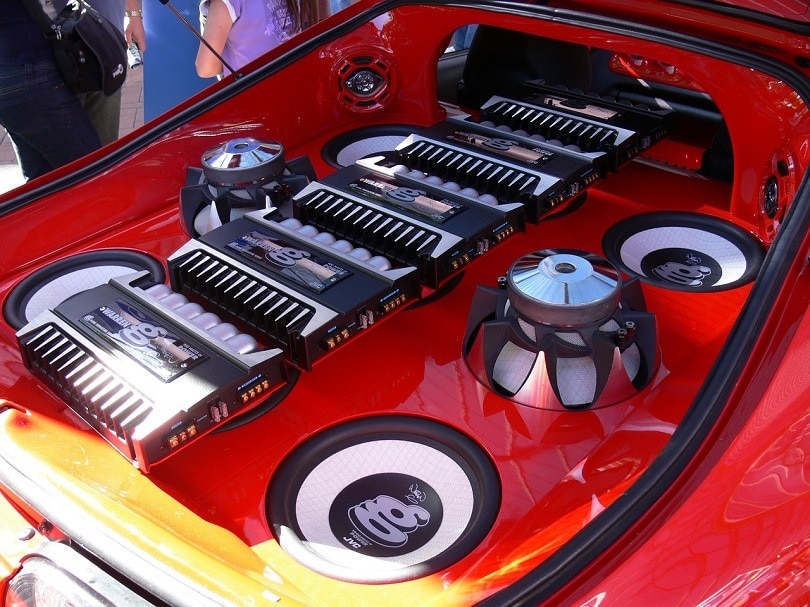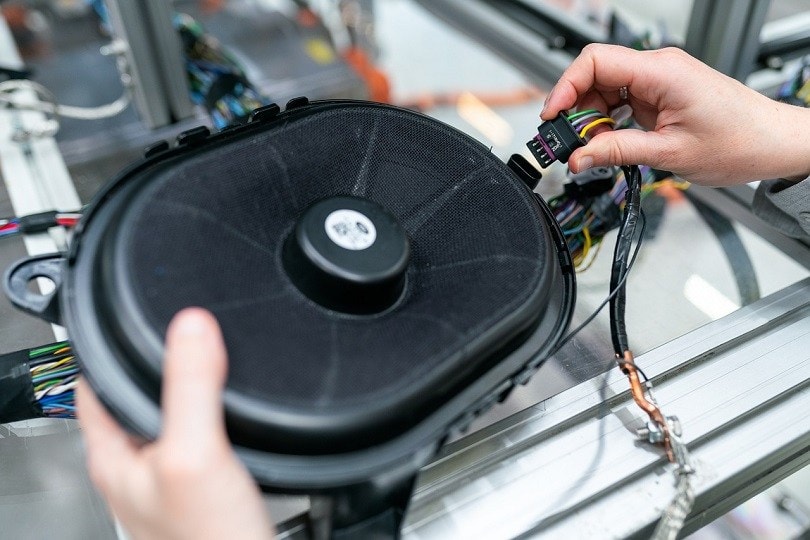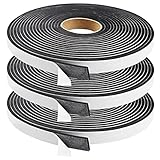How to Make Car Speakers Louder Without an Amplifier
-
Pete Ortiz
- Last updated:

If you love nothing more than driving around town with your favorite tunes pumping out through your stereo, you have likely given some thought to how you can make your car’s speakers louder. You may even have spoken to your local electronics retailer or car stereo installer about this, and, more than likely, they told you to consider installing a powerful amplifier. It’s not bad advice, as a new amplifier will provide more clean power to your car sound system, giving you a significant boost in volume. But good amplifiers are expensive. So, we hear your thinking. “Surely, there must be another way?”
What Are You Trying to Achieve?
There are a few other things involved, but the most important thing for you to consider is the effectiveness of your stereo at providing distortion-free sound, rather than pure volume.
If you don’t believe us, try this: Go out to your car, sit in the driver’s seat, and close all the doors and windows. Start the engine and play a song on your stereo with a heavy bass beat. Wait until the song and the bass gets going, then turn the volume up as high as it will go. Now, unless you already have a very high-end stereo or powerful amplifier, you will find that distortion and vibration are causing a problem, not a lack of volume.
So, the question becomes, what can you do, besides installing an expensive amplifier? Fortunately, there are a few things you can check and do that will help you improve your sound system’s clarity.
1. Consider the Quality of the Music Files You’re Playing
Before you do anything else, consider the quality of the music that you’re playing. By quality, we mean the bit rate of your audio files. It may sound simple, but the bit rate of your audio files impacts significantly on the quality of the sounds your stereo produces. If you’re playing highly compressed small audio files that you downloaded from a website like YouTube, or you’ve ripped low-quality MP3s files from your old CD collection, you’re not helping your cause.
To get the best sound, you need to start with the best audio file that you can get.
Fortunately, subscription music services like Apple Music or Spotify give you the option of downloading or streaming high-quality audio files. Usually, this is something that you’ll need to select manually from the app’s settings, but when it comes to improving the quality of your audio, this is the place to start.
2. Remove Any Obvious Rattles in and Around Your Sound System
This point is another no-brainer, but you’ll be surprised the difference that removing loose items can make to the quality of your car stereo system. Take a few minutes to get rid of any loose change or other items from the pockets of your doors, then check your glove compartment and center console.
While you’re at it, check that the wires connected to your speakers have all been taped down and not left to bounce around behind the paneling. Vibration and a lot of loose objects are not your friends when it comes to having crisp, clear sound. Do what you can to eliminate it.
- Big 19mm X 25m roll
- Matches other wire looms in your car
- Genuine German Quality
3. Make Sure You Haven’t Got Any out of Phase Speakers
All car speakers are connected to your stereo system by two wires. One positive, marked by a ‘+’ symbol and the other negative, marked by a ‘-’ symbol. These wires must be connected to the corresponding positive or negative speaker outputs on your stereo head unit.
It is easy to get these mixed up during installation, and an ‘out of phase’ speaker will impact on the quality of the sound produce by your system. The bass notes will be hollow, the treble too high, and you may also have issues with the clarity and level of sound produced by your system. So, while it is a bit of a fiddly thing to do, check your speaker wiring, the results may be well worth the effort.

4. Improve the Seal Around the Edges of Your Speakers`
One of the easiest improvements that you can make to the quality and volume of your car stereo system is to fill the gap between your speakers and your car’s paneling.
To do this, we recommend using speaker gasket tape, a spongy foam-like material with an adhesive backing. Use the gasket tape all around the edges of the speaker cut-outs in your doors, roof, and dash. Once in place between the speaker and the paneling, the gasket tape will help create a better seal around the edge of your speakers, stopping air and sound passing through the gap. As a result, you should get a louder and clearer sound, with less chance of distortion or cancellation.
- 【WEATHER STRIPPING DOOR SEAL】- EVA window seal,high resilience,flexible enough.
- 【HIGH DENSITY FOAM INSULATION】-Closed cell tape,weather proof,shock-absorbing,sound insulation,Reduce the noise from outside and...
- 【STRONGER BACKING GLUE】-This self adhesive foam weather strip use strong single sided adhesive,but easy to remove and no...
5. Ensure You Make the Best Use of Your Stereo’s Inbuilt Tuning
Another easy way to ensure your speakers are performing at their best is to make use of the built-in tuning system in your stereo head unit. These days, even the most basic stereos come with the ability to adjust the balance and fade of your speakers.
If increased volume is what you are looking for, you should tune your stereo so that the balance and fade are set right in the middle. However, you may find that your system will sound better, and stronger if you set the balance and fade to make the music sound as though it is being played directly in front of you in the driver’s seat.
6. Avoid Maxing out Your Tone Controls
While we’re on the topic of using your stereo’s built-in tuning, we recommend avoiding turning all the tone controls up to maximum. A hefty bass boost will put significant strain on your system and only cause more distortion.
A much better option is to choose a mid-level boost in the bass and lower the high and mid-levels just a touch, which should fatten up the sound of your stereo without causing any annoying distortion.

7. Consider Installing Noise Dampening
Unless you own an expensive luxury car, you are very likely to be able to hear a lot of engine and road noise when you are driving around. Most of the time, you probably don’t pay any notice of it, but that background noise is having a considerable impact on your ability to hear the music.
There are several products available that allow you to reduce the external noise that enters the interior of your car. Some are more expensive than others, but if you are willing to shop around and install it yourself, you can significantly reduce the amount of noise entering your car.
- One 18 inch wide x 33.5 feet long Roll of Self-Adhesive RattleTrap (50 Sq Ft Total) with Install Kit Consisting of Easy Instructions,...
- 80 mil nominal thickness with Patented "Super-Stick" Adhesive
- Sound Deadening Acoustic Insulation for Automotive, Marine, Home, RV
We recommend that you start by dampening your doors. You can do this by placing dampening material inside the doors (behind the windows). Then, with the doors treated, you should consider dampening your engine as this is the source of the loudest noise entering the inside of your car. A simple solution here is to install a hood liner kit and add a layer of dampening material to the engine bay firewall as well.
Conclusion
By this stage, you will already have made an enormous difference to the amount of external noise that is entering your vehicle. However, if you’re keen to go one step further, you should consider treating your car’s floors. A lot of road noise and vibration enters your car through the floor and dampening them will take your noise reduction efforts to a whole new level. Be aware though that dampening the floor of your vehicle is a bigger and more expensive job, but again, if you’re willing to do the work yourself, you can save a fair amount of money.
By this stage, your car interior will be appreciably quieter, and the impact and improvement on your ability to hear your stereo clearly will be simply tremendous.
- You might also like: Speakers Making Noise When Your Car Is Off? Here’s the Fix
Contents





